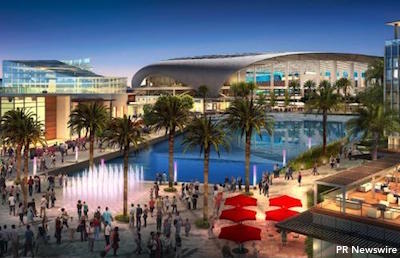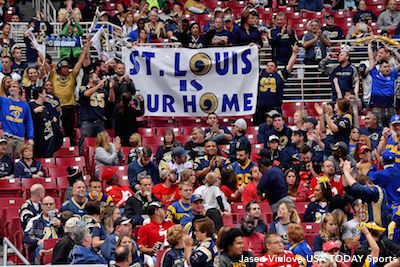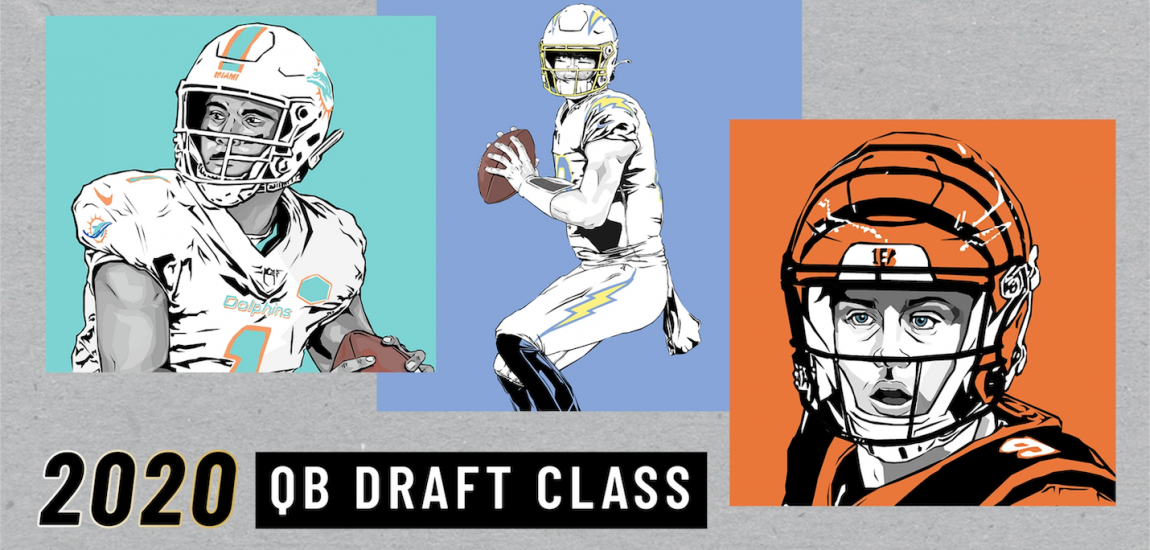Three weeks ago, three NFL teams -- the San Diego Chargers, Oakland Raiders and St. Louis Rams -- all bid to move their teams to Los Angeles. The nation's second biggest city hasn't had a team since the Rams left for St. Louis and the Raiders returned Oakland after the 1994 season, while Green Bay has supported its team since 1919. That should tell you how much Los Angeles really needs an NFL team. Not at all.
After NFL commissioner Roger Goodell set up a shameless contest designed to make Oakland, San Diego and St. Louis dance like rummies for quarters to keep their teams in their towns, Goodell announced last week that the lucky winners of the L.A. sweepstakes were the St. Louis Rams.

Now, when multimillionaires threaten to move their toys across the country, who cares? And, honestly, I really don't. After all, the Oakland Raiders have already moved to LA and back. The Cardinals moved from Chicago to St. Louis to Arizona, where cardinals can't even survive. The Cleveland Browns moved to Baltimore, so now Cleveland has a bunch of guys who dress up like football players every Sunday, and call themselves the Browns.
The only American city with four major league teams that has never lost one is, yes, Detroit. The Lions might be the only NFL team to miss the Super Bowl every single year, but the Ford Family has never once so much as hinted about moving the team.
None of this makes sense unless you're a shameless, greedy owner trying to make a buck -- or trying to get a bunch of broke cities to give you one.
If I win Powerball the first thing I'll do is ask taxpayers to build me a stadium.
— Michael Grunwald (@MikeGrunwald) January 13, 2016
So why does it matter? Because we're paying for it. That's why. We subsidize the owners' game, by the billions -- a game they've rigged so only they can win. According to Judith Grant Long, a professor at the University of Michigan, the United States is home to more than 120 major league baseball, football, basketball, and hockey rinks, arenas, parks and stadiums. The teams that play there have received taxpayer subsidies totaling $21.3 billion. That's billion, with a b -- and only two of those stadiums have made a profit for those taxpayers. The taxpayers' willingness to pay those subsidies helps explain why 99 of those 121 stadiums have been built since 1990.
That includes the dome in St. Louis, which the city and state taxpayers chipped in a cool $280 million to build in 1995. They still owe more than $100 million on it, which will be much tougher to pay off without a team drawing fans and paying rent. The Rams aren't leaving because of the fans, either, who have bought some 85-percent of the tickets the past decade, supporting a team that hasn't had a winning season during that stretch.
Rams owner Stan Kroenke doesn't care about the fans, the taxpayers, or, it seems, anything other than his own desires to go bigger.
It doesn't have to be this way. And in Canada, it isn't. Canadians don’t pay for their stadiums. Their teams do, which kind of makes sense. Canadian taxpayers instead pay for their schools, which also makes sense. Guess whose students are ranked in the top five worldwide, way ahead of American students? Taking candy from a baby may be immoral, but taking money from students and giving it to billionaire franchise owners should be illegal.
The phenomenon of disposable, taxpayer-funded stadiums is not only foreign to foreigners, but also to American college football fans. Beyond the considerable benefit of being a tax-exempt educational entity, American universities typically do not ask taxpayers to pay for their stadiums. You never hear about them holding the local taxpayers hostage by threatening to leave for Nashville or Jacksonville if their hometowns don't build them a new stadium. Which is just one more thing that separates college football from the pros -- for now.
Who orchestrates this fraud? Why, Roger Goodell, of course, who made $44 million in 2014. Not bad for the leader of a non-profit organization. Yes, you heard me correctly. The NFL shamelessly filed for non-profit status back in 1942. More amazingly, the government granted it -- which makes you wonder who, exactly, would not qualify as a non-profit?
The NFL finally dropped its non-profit status last year, but not due to some long dormant sense of decency. They were simply tired of reporting Goodell's ungodly salary every year, and getting mocked for it. It turns out the NFL will only be paying about $10 million in taxes this year -- a figure Goodell himself could pick up, on behalf of his employer. If you need proof that an organization wasn't really a non-profit in the first place, watching it drop its non-profit status to hide unseemly salaries is all the proof you need.

So, what now? L.A. will roll out the red carpet for its latest NFL team, while San Diego and Oakland will hi-jack their cities for stadiums they don't need and can't afford. The money will come out of the pockets of schoolchildren.
Why should fans be loyal to teams that clearly aren't loyal to them? If those taxpayers build stadiums for owners who have no reservation about leaving them behind, the taxpayers need to admit they're in an abusive relationship.
But that seems to be the NFL's specialty.
-- John U. Bacon is the author of four New York Times bestsellers. His latest book, Endzone: The Rise, Fall and Return of Michigan Football was published in September. He gives weekly commentary on Michigan Radio, teaches at the University of Michigan and Northwestern's Medill School of Journalism, and speaks nationwide on leadership and diversity. Learn more at JohnUBacon.com, and follow him on Twitter @johnubacon.






